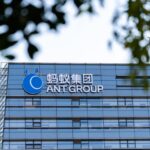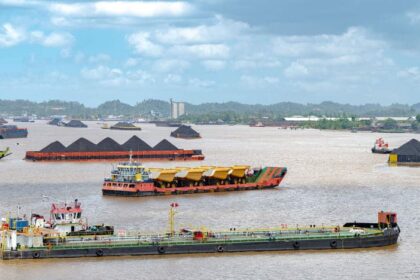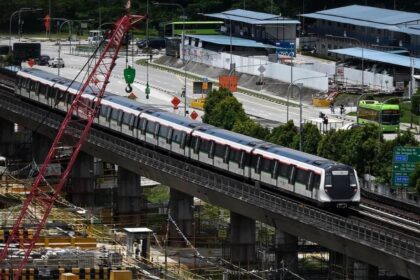Why Hokkaido is at the center of Japan’s chip comeback
Hokkaido is famous for dairy herds, lavender fields, and deep snow, yet the island is now the scene of Japan’s most aggressive industrial push in a generation. Cranes and cleanroom builders are reshaping the outskirts of Chitose near New Chitose Airport. The goal is simple and bold, to anchor a new era of advanced semiconductor manufacturing inside Japan and to reduce dependence on overseas supply at a time when chips power everything from cars and phones to data centers and artificial intelligence.
- Why Hokkaido is at the center of Japan’s chip comeback
- Who is Rapidus and what is planned in Chitose
- Why Hokkaido fits advanced chip manufacturing
- The money question
- The technology race at 2 nm
- Customers, competitors, and strategy
- Talent and the local community
- Geopolitics and supply chain security
- What to watch next
- Key Points
The project’s spearhead is Rapidus, a young Japanese foundry formed in 2022 with backing from eight of the country’s industrial heavyweights and strong support from Tokyo. In short order, Rapidus has secured leading process know how through collaborations, installed extreme ultraviolet lithography equipment in Hokkaido, and produced a working 2 nm prototype device on a pilot line. The company targets mass production later this decade. If that schedule holds, Japan would rejoin the most advanced tier of chip producers for the first time in decades, alongside Taiwan’s TSMC and South Korea’s Samsung.
The stakes are high. The global chip market is worth hundreds of billions of dollars each year. Demand is rising as automakers electrify and as cloud providers and startups race to deploy AI. Supply disruptions during the pandemic exposed how fragile the chip pipeline can be. For Japan, which once made more than half of the world’s semiconductors but now produces only a small share, reclaiming some production for critical chips is also a matter of economic security.
Who is Rapidus and what is planned in Chitose
Rapidus was created as a consortium that includes Toyota, Sony, NTT, SoftBank, Kioxia, Denso, NEC, and MUFG, with strategic support from the Ministry of Economy, Trade and Industry. The company licensed key 2 nm logic technology from IBM, linked up with the Belgian research institute imec, and set out to build a new factory called IIM 1 in Chitose. The site was chosen for abundant industrial land, access to power and water, and an airport that shortens logistics times for people and sensitive equipment.
Design choices at IIM 1 reflect both technical needs and a local touch. The complex is being clad with grass to blend into Hokkaido’s landscape. Local authorities also describe the location as comparatively less prone to major earthquakes than other parts of the country. Rapidus is installing fully automated handling systems and next generation process tools built for gate all around transistors at the 2 nm class.
A central piece of that toolset is extreme ultraviolet lithography. Rapidus has taken delivery of an ASML TWINSCAN NXE:3800E system, the only widely available EUV model capable of high volume manufacturing at leading nodes. The company opened a pilot line in early 2025 and then verified the operation of a 2 nm prototype device. It still aims to launch mass production in 2027 if yields and quality targets are met.
Rapidus chief executive Atsuyoshi Koike, a veteran chip engineer, has kept a fast pace and a clear message about international collaboration and urgency.
Before introducing his remarks, it is useful to note his role. Koike leads Rapidus and has overseen the Chitose project since its inception. He has emphasized both the speed of development and the value of partnerships with overseas technology holders.
We succeeded in manufacturing the 2 nm prototype for the first time in Japan, and at an unprecedented speed in Japan and globally.
Koike has also underscored how partnerships helped the team move quickly and why he wants to compete on quick turn custom production rather than pure scale.
Tie ups with global companies are essential to acquire technology at this level. Our edge is speed, we can produce and deliver chips three to four times faster than anyone else.
Ambition alone does not guarantee success. The company must still move from proving a device on a pilot line to stable mass production, a step that has challenged many new entrants in the past.
Why Hokkaido fits advanced chip manufacturing
For a cutting edge fab, location matters. Hokkaido offers several advantages that executives and officials point to repeatedly. The island has plentiful water, a cool climate that helps with data center and facility cooling, and large tracts of developable land compared with crowded urban regions. It also has strong potential for renewable energy from wind, hydro, and solar that could, over time, help offset the heavy power demands of chip production.
These natural strengths are being paired with policy effort. The prefecture’s Semiconductor and Digital Industry Promotion Vision calls for a concentrated cluster that can draw investors and spread benefits across the region. Suppliers are already following Rapidus into Chitose. ASML, Tokyo Electron, Applied Materials, and Lam Research are among the equipment and materials leaders that have begun to establish a local presence to serve the new fab. imec and other research partners are engaging with universities and training centers to seed talent and joint projects.
Local impact is visible in rising demand for skilled workers, housing, services, and logistics near the airport corridor. City planners in Chitose are working on accommodations and transport links, and businesses from construction to restaurants are preparing for an influx of engineers, technicians, and their families.
The money question
Japan is spending heavily to bring advanced semiconductor production back onshore. The effort extends far beyond a single factory. It includes subsidies for domestic and foreign manufacturers, research programs, and new laws centered on economic security. Even so, the cost of catching up at the leading edge is large by any measure.
How much will it cost
Industry estimates indicate Rapidus needs on the order of 5 trillion yen to fund initial mass production. Government support already totals in the billions of dollars, with additional packages for AI and semiconductors announced in late 2024. Reports also indicate Tokyo plans to invest a further 100 billion yen in fiscal 2025, a move that would make the state a majority shareholder as it accelerates the national push for domestic capacity. While the exact mix of grants, tax incentives, and guarantees changes with each budget, the direction is consistent, more public backing to jump start leading edge production inside Japan.
Public money and policy tools
Subsidies are paired with policy initiatives. Japan’s Economic Security Promotion framework aims to secure critical supply chains. The state has designated companies such as ROHM as providers of critical products, and it has extended support to memory leaders like Micron for facility expansions in Hiroshima. Other measures include funding for research through the Leading edge Semiconductor Technology Center and incentives to bring in foreign investment. In parallel, TSMC received backing for new facilities in Kumamoto, which are already producing 12 to 28 nm devices and building a second fab due to start up around 2027.
For Rapidus, public support reduces early risk, but it does not eliminate the need for sizable private investment or the discipline required to win and keep customers. Critics worry about a perpetual reliance on subsidies. Proponents argue that without decisive funding the country would fall further behind. The outcome will hinge on how quickly Rapidus can turn prototypes into reliable, high yield products that customers trust.
The technology race at 2 nm
The headline target for Rapidus is 2 nm, which places it against world class competitors. Understanding what that means helps explain both the excitement and the difficulty of the task.
What 2 nm really means
Process node names such as 7 nm, 3 nm, or 2 nm are industry shorthand. They no longer map to a single physical dimension on a chip. Instead, they signal a generation of process technology with smaller features, new transistor designs, and tighter wiring. At this class, leading foundries use gate all around transistors, where the channel is wrapped by the gate on multiple sides to improve control and reduce leakage. The result can be higher performance and lower power use at the same clock speed compared with prior nodes.
Why EUV matters
Advancing to these nodes requires extreme ultraviolet lithography. EUV uses a far shorter wavelength of light than the deep ultraviolet tools of earlier generations. That allows more precise patterning of tiny features. ASML is the only company making EUV scanners. The NXE:3800E model Rapidus installed is designed for high throughput at the most advanced logic nodes. Getting one of these complex machines installed and running is a milestone in itself because it demands specialized skills, ultra clean environments, and tight coordination across dozens of suppliers.
The toughest hurdle is yield
Producing a working device on a pilot line proves that the process stack can be made to function. Mass production is different. Foundries must deliver thousands of wafers per month with high yield, meaning a large share of chips on each wafer meet strict performance and reliability targets. Yield ramps take time, capital, and iteration with customers. TSMC and Samsung have deep experience here, which is one reason they dominate at the leading edge. Rapidus will need to move quickly on process control, defect reduction, and equipment uptime to compete.
The competitive map is shifting as well. TSMC has begun early 2 nm work and continues to refine 3 nm. Samsung is messaging its own 2 nm timeline. Intel is pushing its Intel 18A process, often described as roughly the 1.8 nm class in industry parlance, while its naming conventions differ. The upshot is a tight race with multiple leaders improving their processes each year.
Customers, competitors, and strategy
Winning customers is as critical as building the fab. TSMC and Samsung have long standing relationships with handset makers, cloud companies, and chip designers. Those partnerships shape design choices and even co located development, making it hard for a new entrant to displace incumbents.
Rapidus says it will compete on speed and customer focus, offering fast turn custom production for clients who want advanced logic tailored to their needs. That approach could appeal to Japan’s automakers and industrial companies that want more predictable local supply after the shortages of recent years. It could also attract AI chip designers that need quick iterations during early product cycles. To build those relationships, Rapidus has opened a United States office and hosted customer events in Hokkaido in 2025 to demonstrate progress and engage potential clients.
Meanwhile, the rest of Japan’s chip ecosystem is stirring. Kioxia expanded facilities in Yokkaichi and Kitakami with support from Tokyo. Toshiba has built a new plant in Ishikawa. Micron is adding capacity in Hiroshima with multibillion dollar subsidies. Samsung is setting up an R and D base in Yokohama. And TSMC’s Kumamoto presence has already spurred suppliers, wage growth, and local infrastructure upgrades in Kyushu, reinforcing the idea that one plant can pull a broader cluster into place.
Talent and the local community
Machines do not make chips alone. A new fab needs thousands of skilled workers, from process engineers and equipment technicians to facilities, safety, and logistics teams. Japan faces a tight labor market in semiconductors, with an estimated shortage of tens of thousands of engineers in the next few years. Hokkaido must persuade talent to move north and to stay.
Training and education
Rapidus is partnering with Hokkaido University and other schools to build pipelines for future hires. The national plan includes the Leading edge Semiconductor Technology Center, which coordinates research and training with industry. Courses taught by experts are planned to accelerate skill development in lithography, etch, deposition, metrology, packaging, and telecommunications. These programs target both fresh graduates and mid career workers shifting from adjacent fields.
Immigration and housing
Company leaders acknowledge they will need to hire foreign specialists to hit ambitious schedules. That remains a sensitive topic in a country with low public support for large scale labor inflows. Local authorities in Chitose are preparing housing and community services for incoming workers and their families. Coordinating schools, transport, and amenities will be essential if the region wants to keep that talent over the long term.
Power is another factor in talent and operations. Advanced fabs consume large amounts of electricity with tight quality requirements. Hokkaido’s mix of hydro, wind, and solar is growing, and debates continue about how best to ensure stable baseload power for a facility that cannot afford downtime. Regional energy planning will sit alongside recruitment and training on the list of practical challenges to solve.
Geopolitics and supply chain security
Semiconductors sit at the center of strategic competition. Tokyo’s push pairs economic goals with national security aims, including a desire to reduce the risk that political or military tensions could throttle chip supply. Concerns about a crisis in the Taiwan Strait have sharpened the focus on geographic diversification. Japan has aligned with partners in the United States and Europe on export controls for the most advanced tools. It is also working closely with American and European research centers and firms to share know how and to build resilient supply chains.
Japan still holds strong positions in materials, specialty chemicals, and chipmaking equipment through companies like Tokyo Electron, Shin Etsu, and JSR. By adding advanced logic production to those strengths, policymakers hope to create a home market that supports local design and manufacturing while remaining deeply connected to allied markets.
What to watch next
The next two years will show whether Hokkaido’s bet can scale from promise to production. Key milestones include continued installation and qualification of process tools at IIM 1, steady output from the pilot line, and first deliveries of prototype chips to paying customers. Watch for signs that yields are climbing and that a set of flagship clients has committed to repeat orders.
Financing will remain a headline issue. The government is preparing additional support, and private capital will play a larger role if technical milestones are met on schedule. Workforce numbers in Chitose and the pace of hiring at universities and training centers will show whether the talent gap is narrowing. Energy planning for stable high quality power in Hokkaido will also feature in local and national debates.
Elsewhere in Japan, TSMC’s second Kumamoto plant is scheduled to come online around 2027. That timeline overlaps with Rapidus’s mass production target, setting up a test of whether Japan can support multiple growth poles in advanced manufacturing at once. The cluster effect, if it takes hold, could reshape regional economies in both Kyushu and Hokkaido.
Key Points
- Rapidus has installed an EUV scanner in Chitose, started a pilot line, and verified operation of a 2 nm prototype device.
- The company targets mass production in 2027, competing with TSMC and Samsung at the leading node class.
- Hokkaido offers land, water, a cool climate, and growing renewable energy, drawing suppliers like ASML and Tokyo Electron to the region.
- Funding needs are large, around 5 trillion yen for mass production, with the state planning additional investment and policy support.
- Japan is pairing subsidies with research and training through the Leading edge Semiconductor Technology Center to address a major talent shortage.
- TSMC’s factories in Kumamoto and expansions by Micron, Kioxia, Toshiba, and Samsung show a wider revival of semiconductor activity in Japan.
- Geopolitics and economic security are central drivers, with Tokyo seeking resilient supply chains alongside the United States and Europe.
- Progress in 2025 to 2027 will hinge on yield ramps, customer commitments, workforce growth, and stable power for continuous fab operations.












